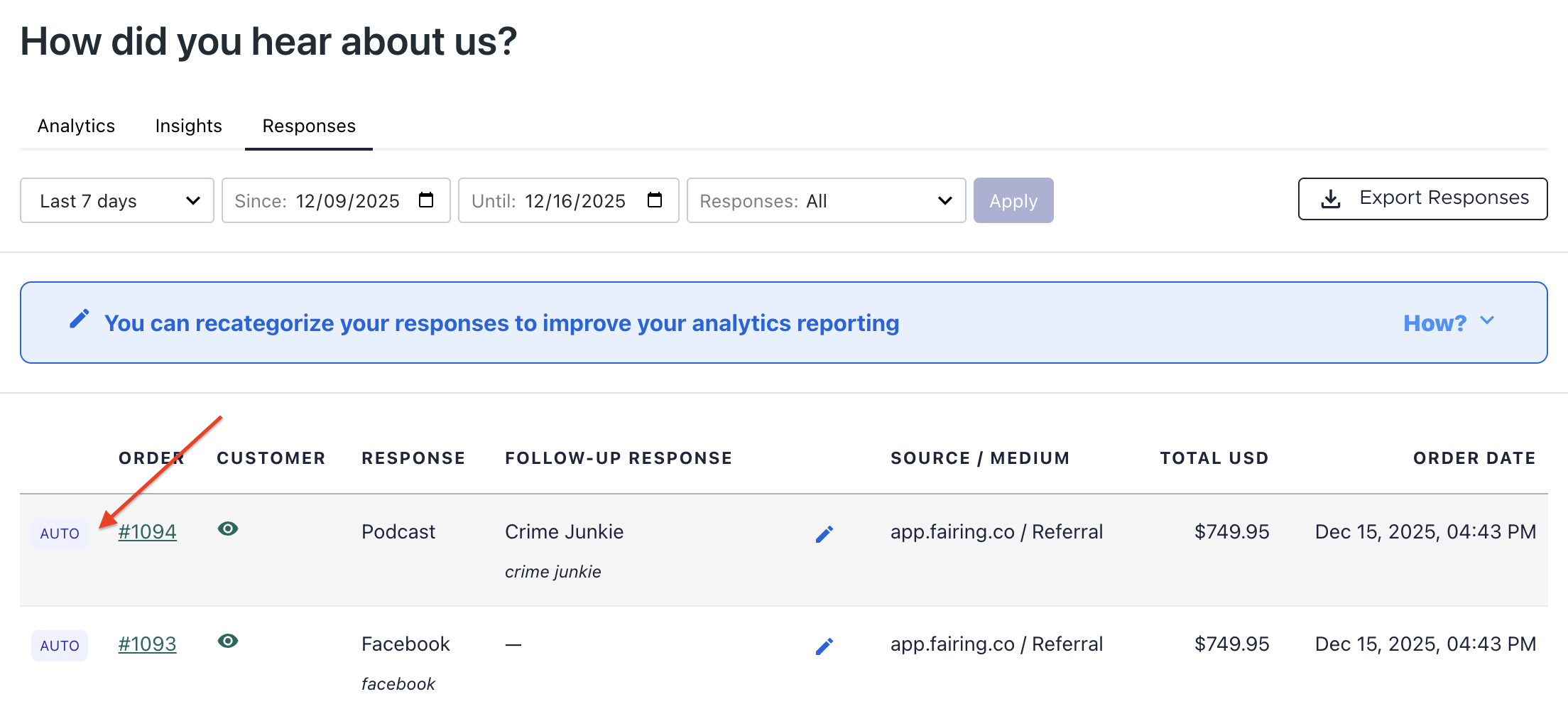Response Recategorization
Clean up response data with response recategorization.
Response Recategorization - How To
Response recategorization lets you clean up your response data for more accurate insights. Consumers often write in responses that already exist on your response list - recategorization allows you to aggregate and structure that data. The power of recategorization can be highlighted with the below 2 use cases:
- Someone writes into Other 'SmartLess Podcast', you can recategorize the Other response to Response = 'Podcast' and Follow-Up Response = 'SmartLess'
- Someone answers YouTube and then writes in 'SmartLess Podcast' to 'Where on YouTube?' To measure your marketing efforts more accurately, you want this response to show under 'Podcast', you can recategorize these responses to Response = 'Podcast' and Follow-Up Response = 'SmartLess'
To recategorize a response, click the pen icon to the right of a response in the Responses tab. After recategorizing a response, we store the original response as a reference along with the new value and update your analytics to reflect the new value. For example, if 'My mom' is reclassified to 'Friends and Family' - your 'Other' response count will drop by 1 in analytics and 'Friends or Family' will increase by 1 for response count in analytics.
This feature is not available for Date and NPS question types.
Response Recategorization Analytics
In Analytics, you can view your data before and after recategorization by turning on 'Show original.' With 'Show original' on, you will see an 'Original' and 'Delta' column for each column enabled. The 'Original' columns show the metrics before the responses were recategorized. The 'Delta' columns compute the percentage change between the after recategorization numbers and the before reclassification (original) numbers.
The Count, Percent, Revenue, AOV columns always show the metrics after recategorizing data.
Exact Match Automated Recategorization
Fairing automatically reclassifies ‘Other’ write-ins when they’re an exact match to an existing response option (case-insensitive).
For example: if a customer writes ‘facebook’ into Other and you have a 'Facebook' response option, that response is automatically reclassified to 'Facebook.'
This automation runs in real time in the background. Automatically reclassified are noted with an AUTO tag in the Responses tab.

Responses tab AUTO tag
Updated 4 days ago
